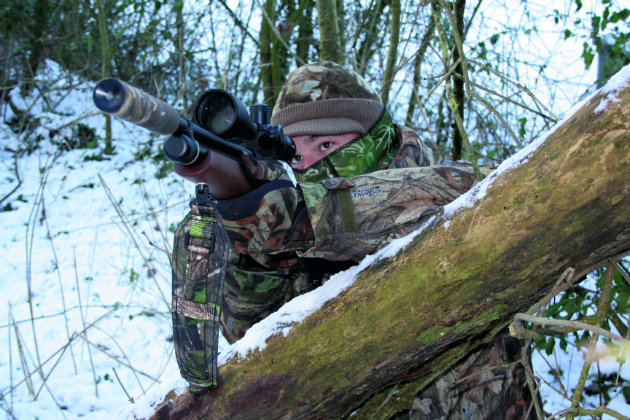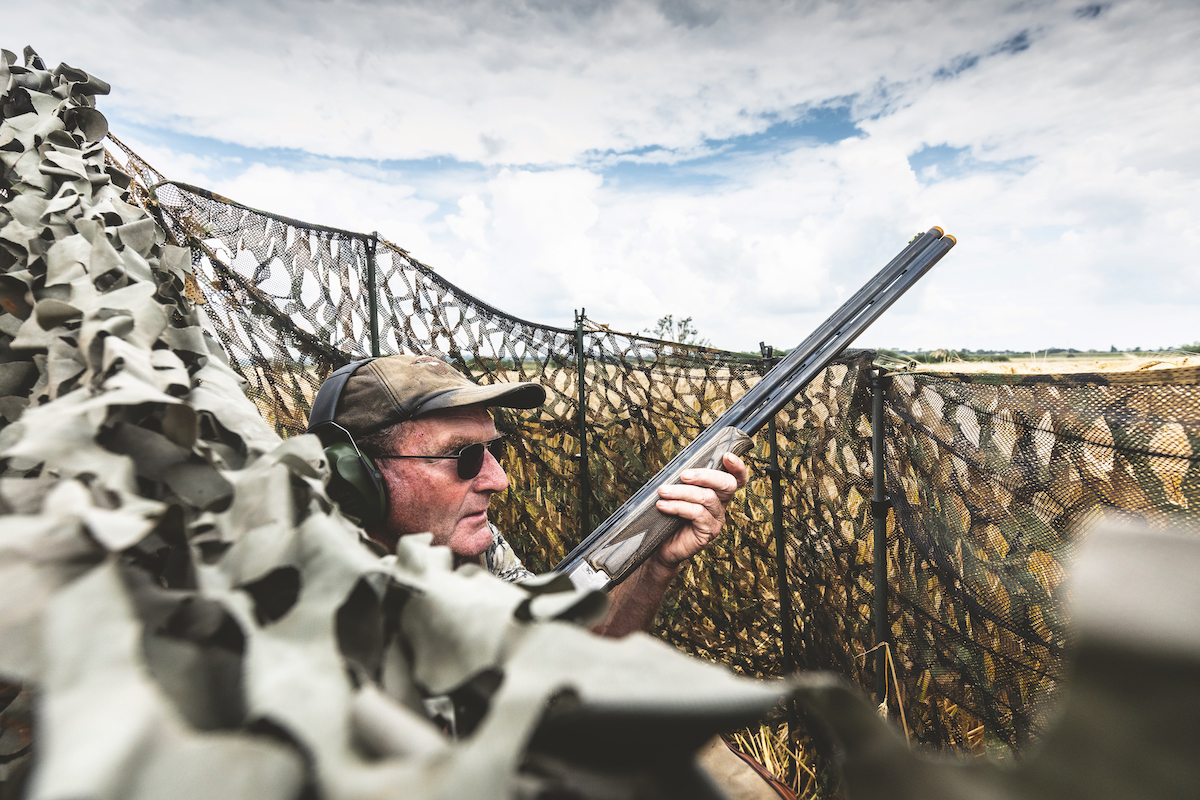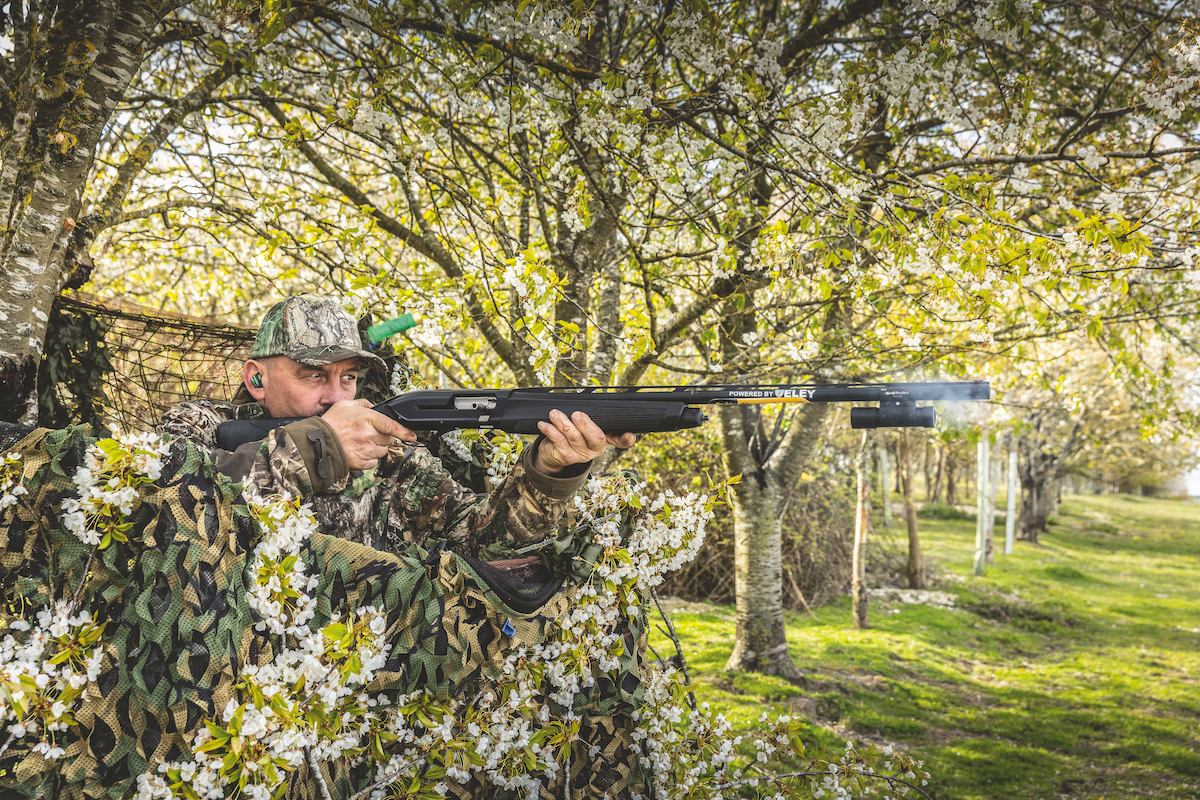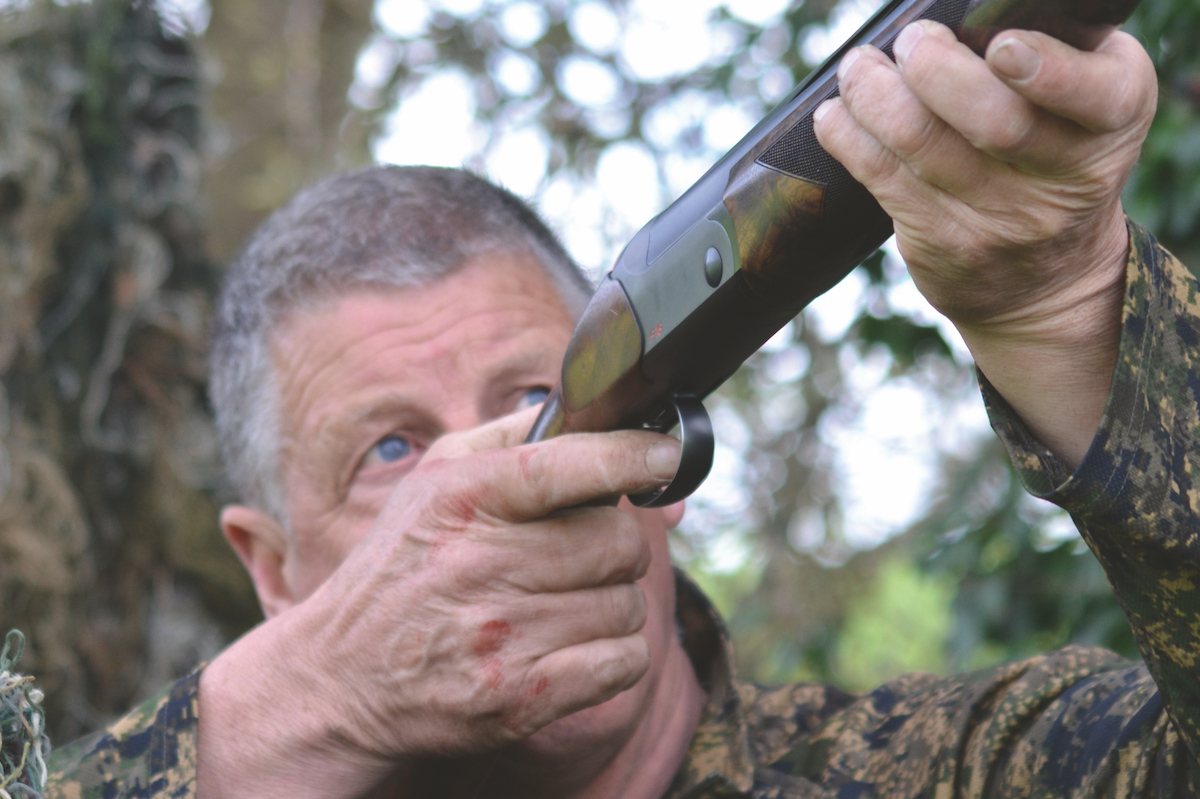Winter wood pigeon airgunning
How to be successful with this wily quarry during the colder months

The winter months provide a good opportunity to make a dent in the numbers of this major agricultural pest. Wood pigeon can be decoyed to within range of the airgun at any time of year, but targeting them at the winter roost is usually more reliable.
When the weather is bad large flocks of pigeon will gather to spend the night in sheltered areas of woodland.
Crops and food
The main reason for winter wood pigeon airgunning is for crop protection but the airgunner will also get the reward of some delicious meat to take home. Whilst it satisfying to use an airgun for pest control of rats, squirrels and corvids, the prospect of putting rich, succulent pigeon breasts on the dinner table is very tempting.
Choosing your spot to roost shoot
Airgunners need to hide so that they can ambush wood pigeon when they have settled amongst the branches. Going after a flying bird is a no-no, as airgunners have just a single pellet rather than a shot pattern.
https://www.instagram.com/p/B7BhLsSpc41/?utm_source=ig_web_copy_link
Woodland preferred
Wood pigeon like to roost in patches of woodland that offer plenty of dense cover to keep out drafts and protection from the elements. Look at woods on the lee side of hills or those in sheltered valleys. Be a detective – look for feathers and droppings on the ground to show you where the birds may be. Wood pigeon also like the shelter of evergreens close together and stands of hardwood trees smothered in ivy.
In fact they love to sleep where there is little chance of threading a pellet, within tightly packed pines or patches of impentrable blackthorm.
The best places to lurk in ambush are those where there is plenty of ivy or dense cover to shelter roosting birds (and to hide a hopeful airgun shooter) and where there are also taller trees, such as mature oak and ash, reaching above the snug understorey. In these places, the woodies will usually land in the loftier branches from where they can survey the scene below, before they drop down to roost. Pick them off when they are silhouetted against the wintry sky, before they flutter down into the cosy thicket beneath.
When to set up
Don’t leave it too late to get into position. An hour or two before dusk is a good time to set up, so as not to spook too many early arrivals from the woods.
Once I find a promising place, I look for a spot that offers a clear view of, and clear shots into, the trees that I expect incoming pigeon to land in. I rarely build a hide when shooting pigeon at the roost because it is often necessary to shift position properly to cover the trees to which they are flighting. It’s far easier to creep from one natural hiding place to another than trying to pull down hide poles and netting and then carting them a few metres to set up somewhere else.

Camouflage patterns make a difference but keeping still and using natural cover is the key in concealment
What to wear
Dress in drab colours and an ivy-clad tree trunk should keep you hidden and provide a rest when shots present themselves. Keep your face covered, because a pink blob in the dark can spook pigeons.
Standing quietly
Use the side of your boot to shunt the leaf litter away from the patch where you are standing. By pushing dry leaves and fine twigs away to reveal the soft, damp soil beneath, you will be able to adjust your footing accordingly, without causing a commotion as you shift your weight to steady yourself for a shot. Standing is usually the best option. However, if you are fortunate enough to find a place where you can take unobstructed shots while seated, it’s a steadier position to shoot from.
Try to get the gun into your shoulder before the pigeon get too close because the movement often catches the eye of flighty pigeon.
With pigeon in range, it is a question of picking the one that offers the easiest shot to the kill zone. A close one offering a headshot should be your first choice. If the head is obscured, don’t be tempted to just go for the big target offered by the chest area. The crop will probably be stuffed with grain and berries, and the upper part of the breast is made up of thick bone and muscle that can act as a shield. The lower part of the breast presents a clearer route to the heart and lung area, especially if the bird is at a slight angle to you, in which case, a shot placed just in front of the white feathers at the curve of the wing should find the engine room, as will a shot from behind and between the shoulders if taken at a relatively flat angle.
Airgunning in the cold
Airgunning in the cold
Five reasons to use an airgun to control woodies
You may never get the large bags you get with a shotgun, but there are numerous advantages to shooting decoyed…
Shooting pigeons with an airgun and placing decoys
Although a shotgun is usually my tool of choice for dealing with crop-raiding pigeons, shooting pigeons with an airgun is…
Think in x-ray
It’s difficult to lay down hard and fast rules when it comes to pellet placement because so much depends on the angle of the shot and the way the bird is presented to you. The secret is to think in X-ray. This gets easier once you have prepared a few birds for the table as you will know where the vital organs are situated.
If you drop a bird don’t break cover but mark it carefully for retrieval. The muted muzzle report of an airgun fitted with a moderator causes scant disturbance. There are times when birds linger and you get the chance of a second shot from the same group.











